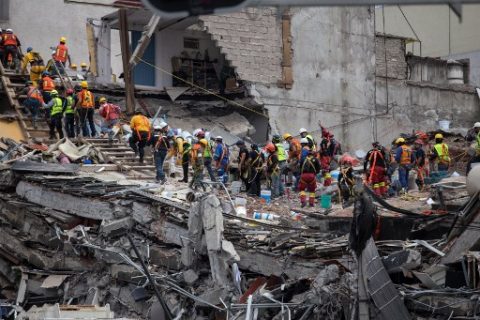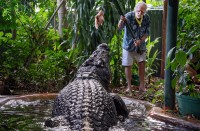
/ AFP/
by Marc Burleigh and Yemeli Ortega
Agence France Presse
MEXICO CITY, Mexico (AFP) — Hopes of finding more survivors after Mexico City’s devastating quake dwindled to virtually nothing on Sunday, five days after the 7.1 tremor rocked the heart of the mega-city, toppling dozens of buildings and killing more than 300 people.
Yet authorities were still accommodating anguished families who insisted that painstaking rescue operations continue at a handful of sites.
Foreign teams from Japan, the US and elsewhere were working with dogs and hi-tech gear to try to detect signs of life under the rubble.
In the first three days, 69 people were pulled out alive. But since Friday only bodies have been recovered.
On a blanket in front of a collapsed office block where several people were trapped by the quake a picture of one of those inside read: “Adrian, you are a warrior. Your family, friends and Dario are waiting for you.”
A series of smaller earthquakes in the south of Mexico on Saturday — including a 6.1-magnitude one that killed two people and triggered seismic alerts in the capital — stoked panic in a population traumatized by Tuesday’s disaster. Two women in the capital died of heart attacks.
The shaking also forced a brief suspension of rescue efforts.
Prone to quakes
The tremors underlined the historic vulnerability of the country to quakes, sitting as it does on several tectonic plates.
A 1985 earthquake that killed 10,000 people in Mexico City is still fresh in the minds of locals so many years later.
But some of the families hoping against hope to see trapped loved ones again also clung to memories of “miracle” rescues in 1985 that happened a week after that quake.
Experts say that, usually, there is little to no chance of finding quake survivors after three days have passed.
Yet Mexico City’s mayor, Miguel Angel Mancera, told Televisa television that around “30 people may yet be able to be found in this search and rescue operation.”
“I want to make absolutely clear that for the moment no building will be demolished and no type of heavy machinery will be used until we are fully certain” that all survivors and bodies are recovered, Navy Captain Sergio Suazo told reporters.
The smell of decaying bodies wafting out from collapsed buildings presaged grief for some relatives.
Rescue workers wore face masks to shield themselves from the odor.
From the rubble of a flattened building in the south of the capital, emergency workers pulled out another body early Sunday. A thermal scanner on Saturday had suggested that two people might still be alive under the debris.
At another site, a survivor of another sort was found and recovered from a crumpled apartment: a squawking green pet parrot named Lucas.
‘Here to save lives’
The Mexican and foreign crews bent on rescuing survivors refused to call it quits.
“We’re here to save lives. You have to have faith and believe (the people inside) are in a place with access to air and managed to survive,” said Karin Kvitca, a 29-year-old with an Israeli rescue crew.
A technological coordinator for the Mexican Red Cross, Ulises Zarate, told Televisa television: “We are waiting on a team with infrared cameras that will detect any bodies. We will be able to see through walls.”
So far, the foreign specialists have found only cadavers. At one point, Japanese rescuers were seen removing their helmets and bowing before a recovered corpse.
The latest death toll stands at 318, of which 180 in Mexico City.
White wreaths were placed by the rubble of what used to be a school in the south of the capital where 19 children and six adults died. An eight-year-old boy recovered alive was in an induced coma in hospital.
The rest of the deaths occurred in the states of Morelos, Puebla, Mexico, Guerrero and Oaxaca.
© Agence France-Presse








